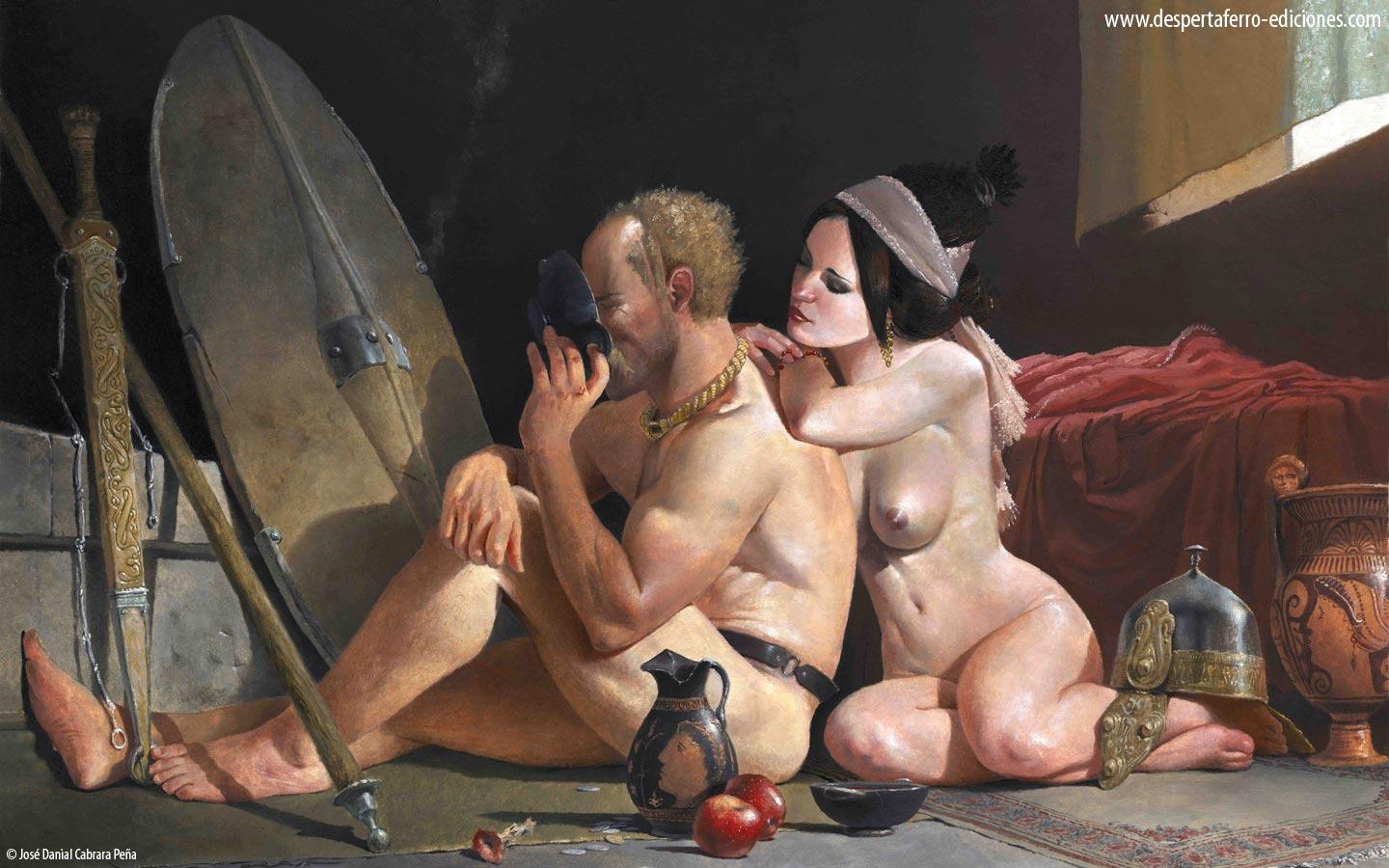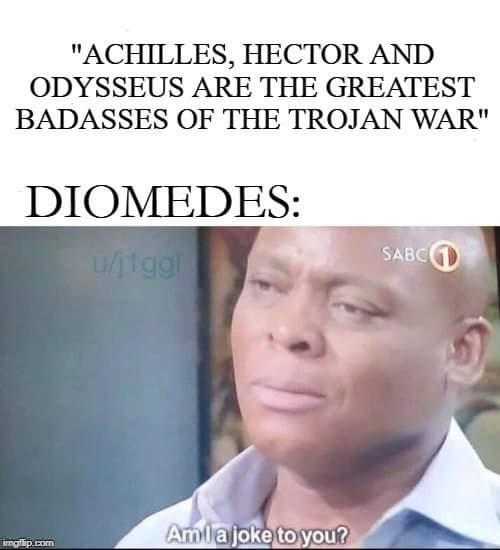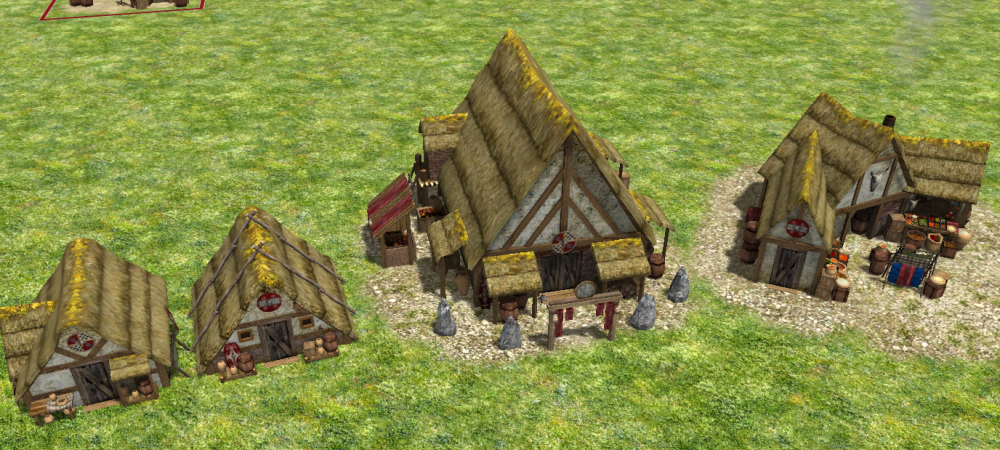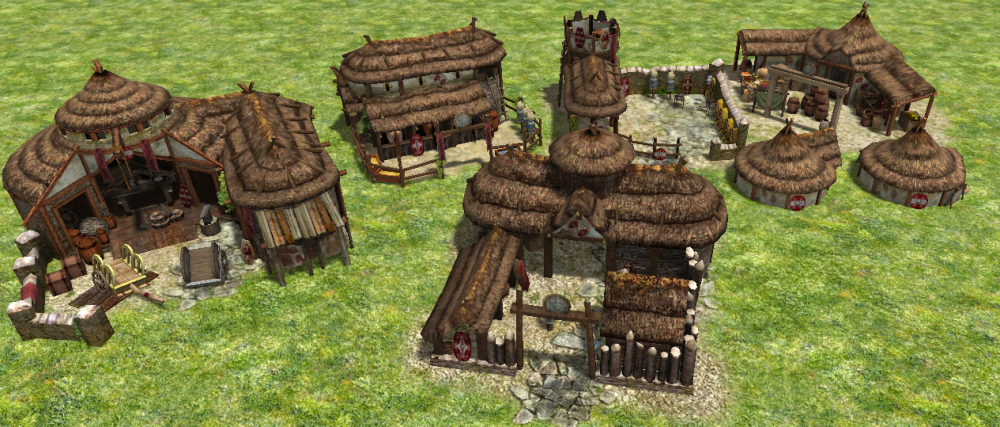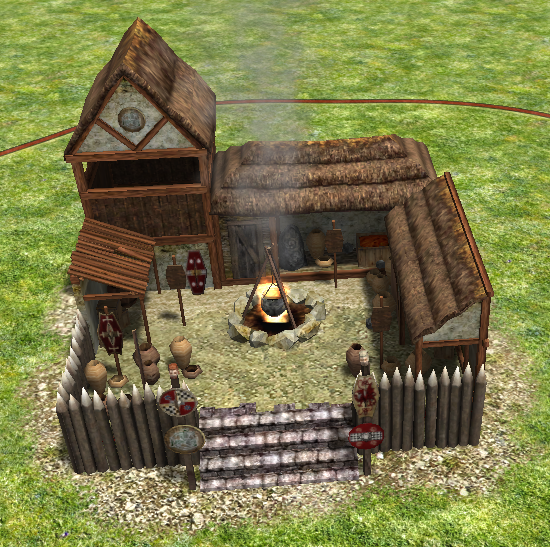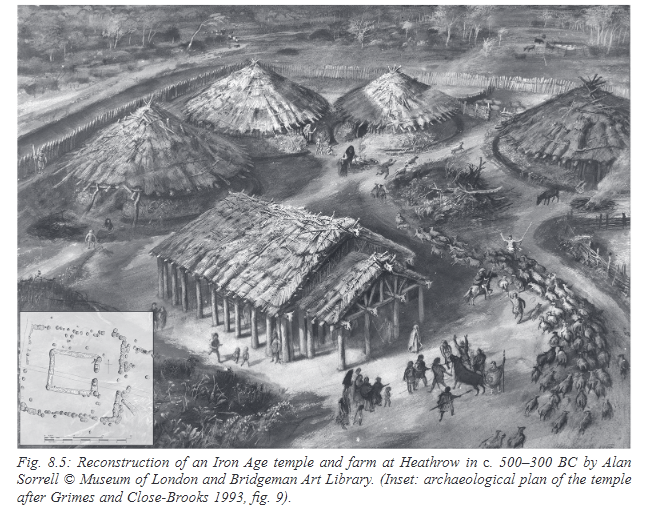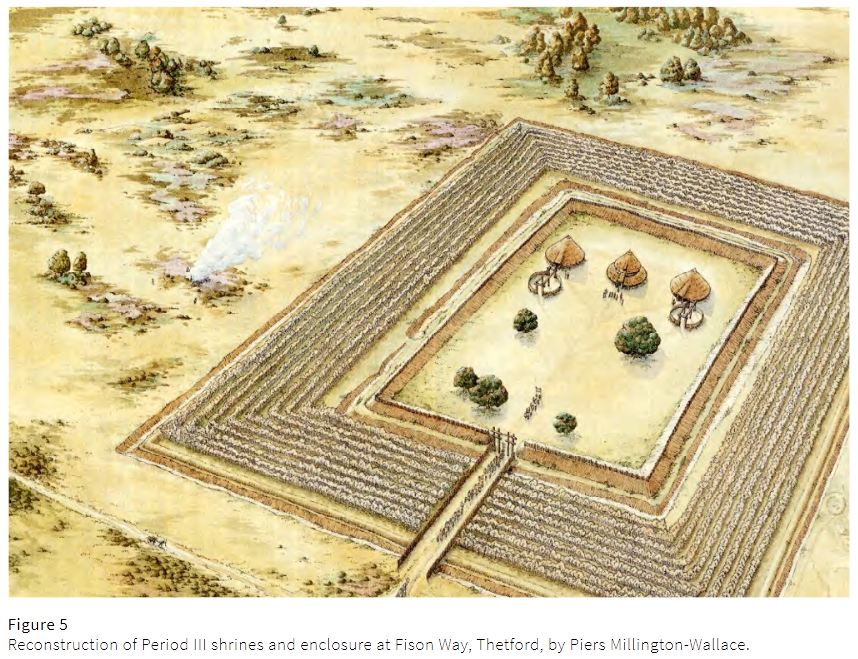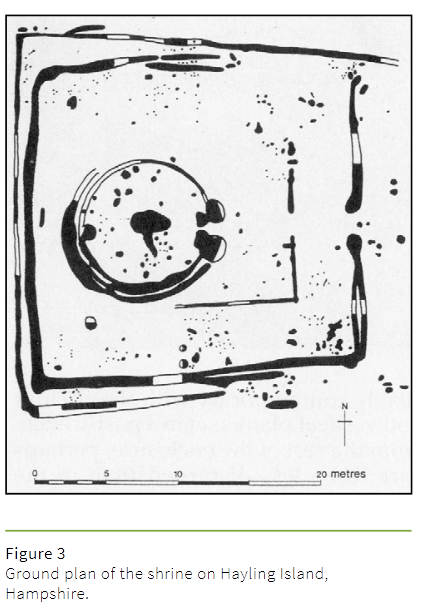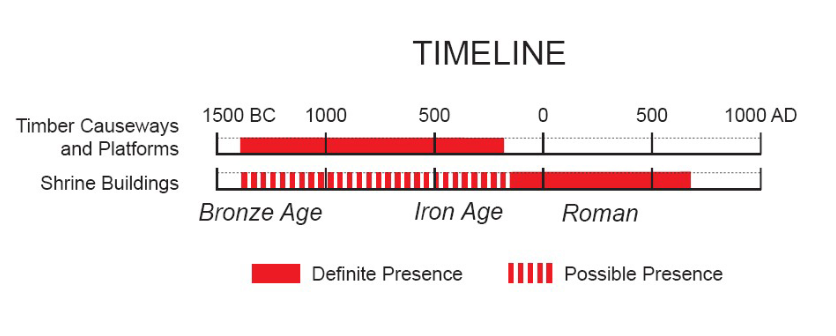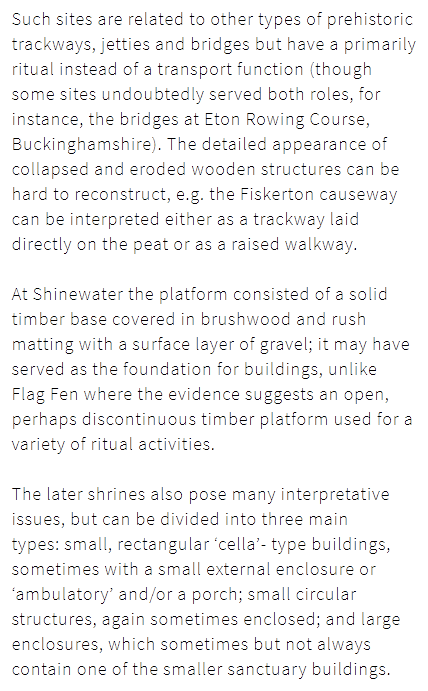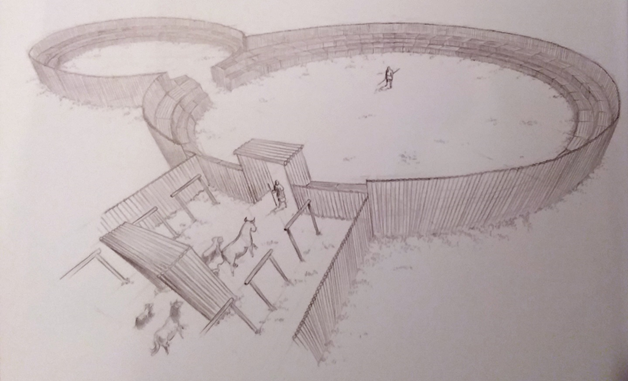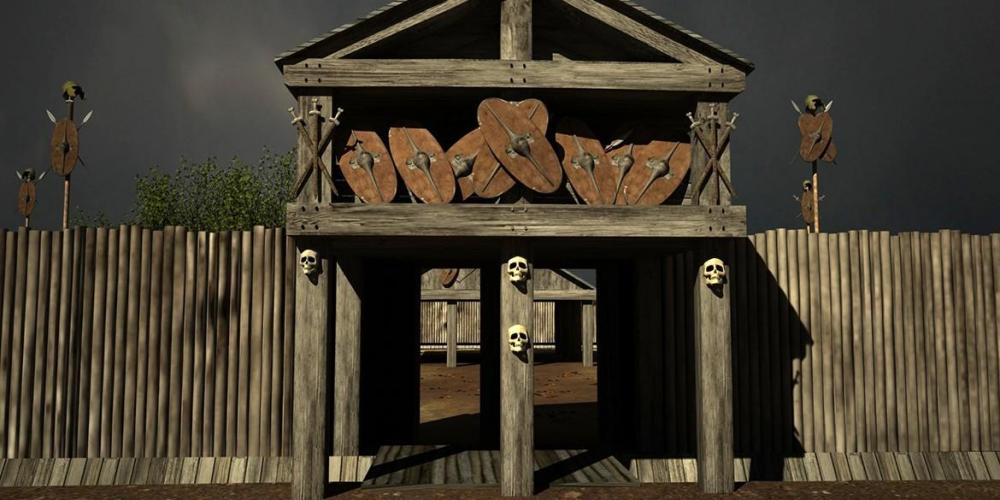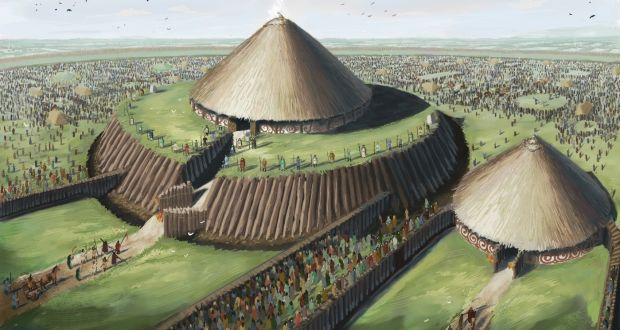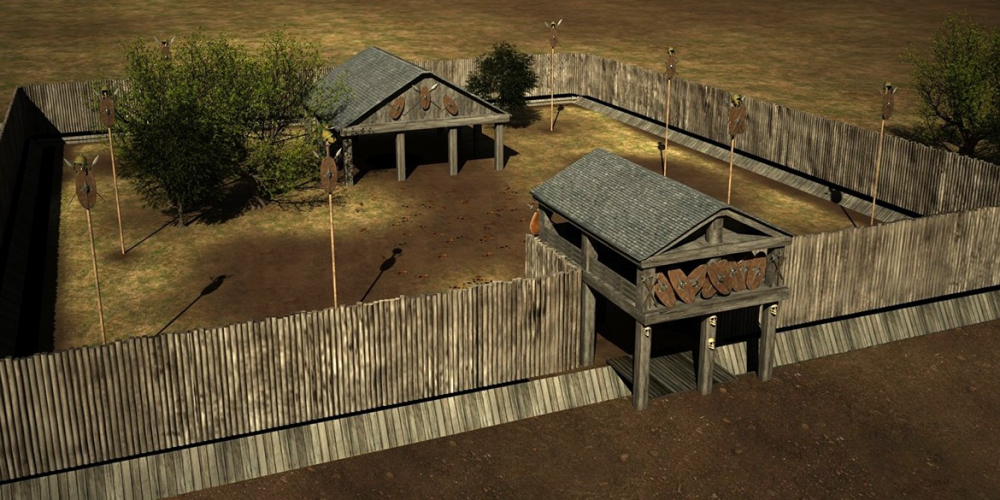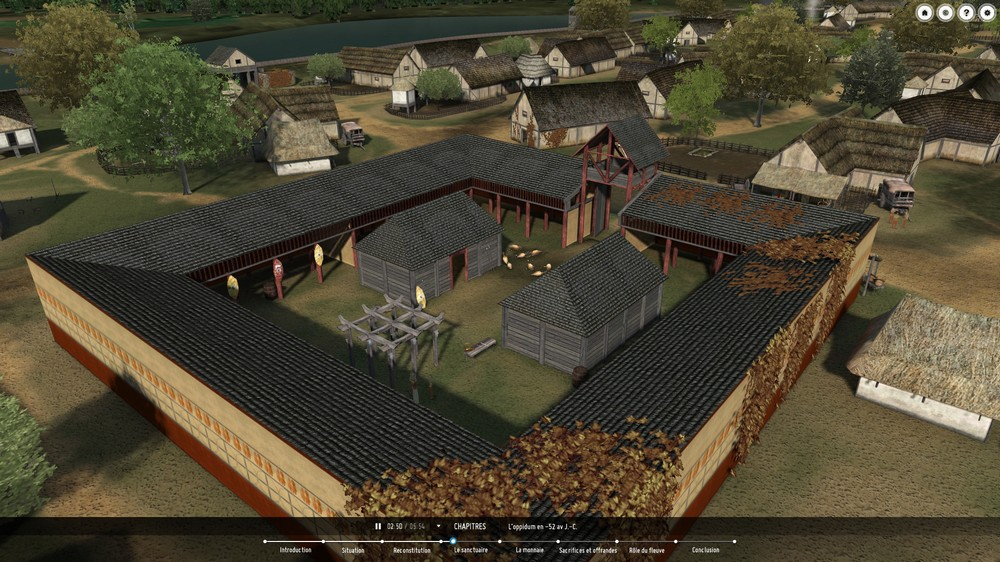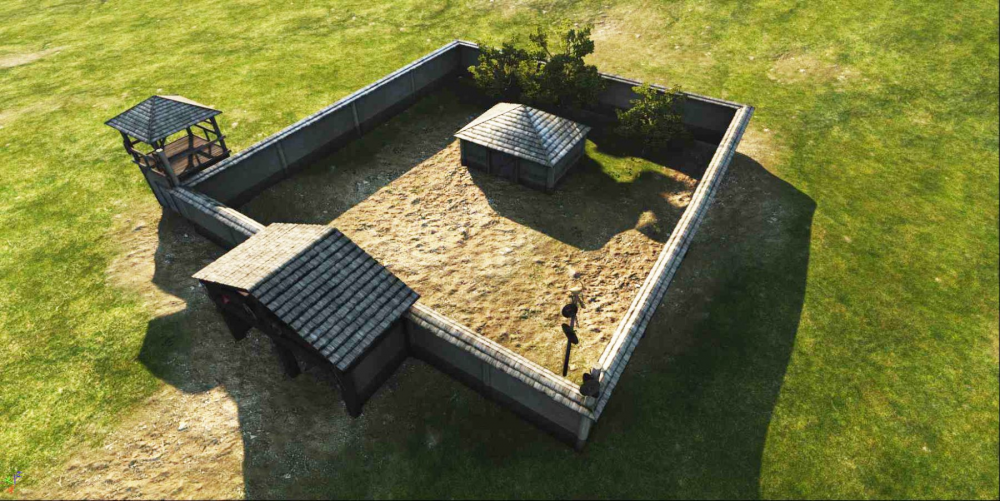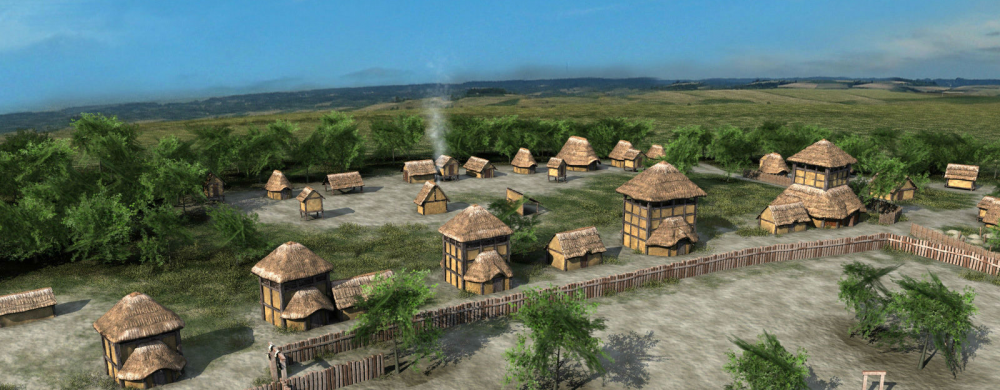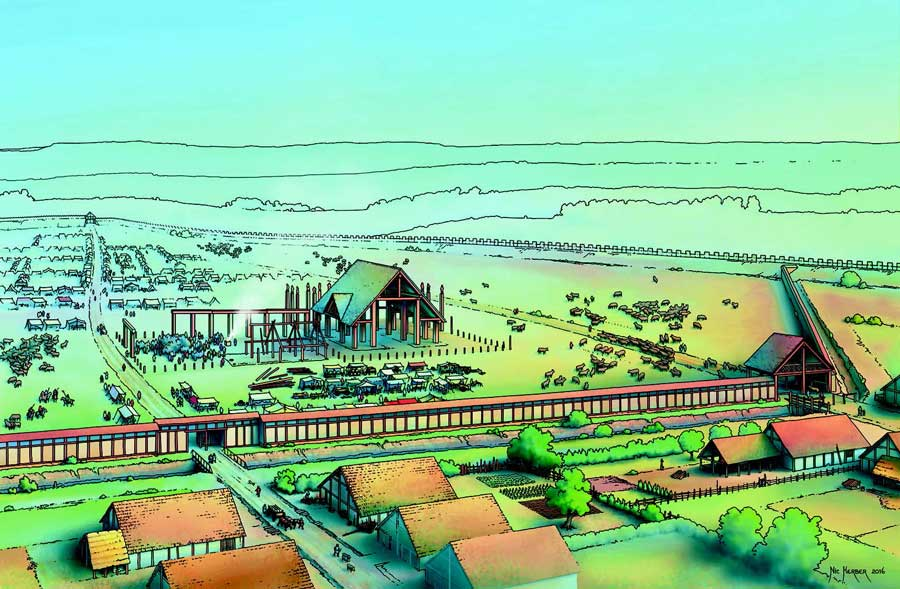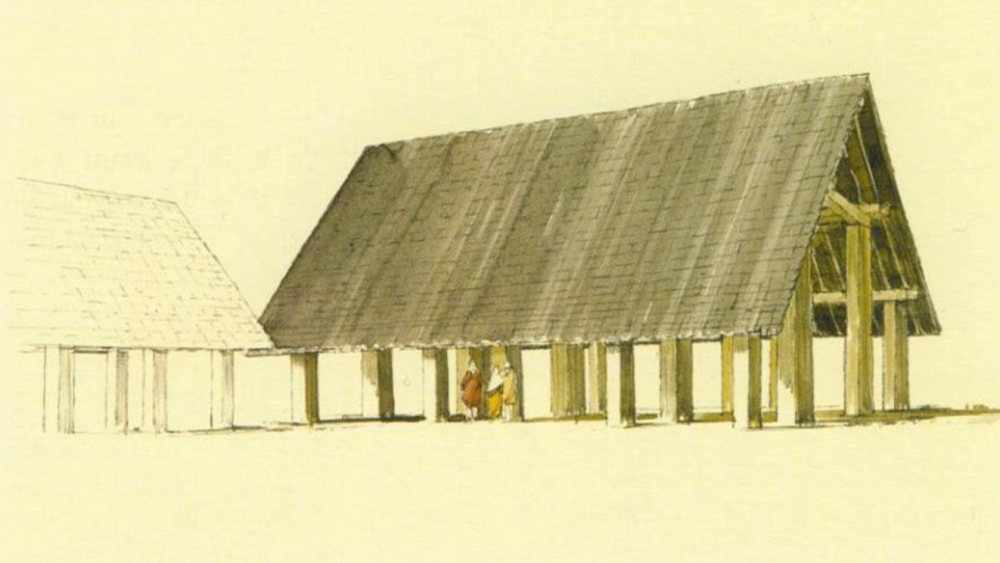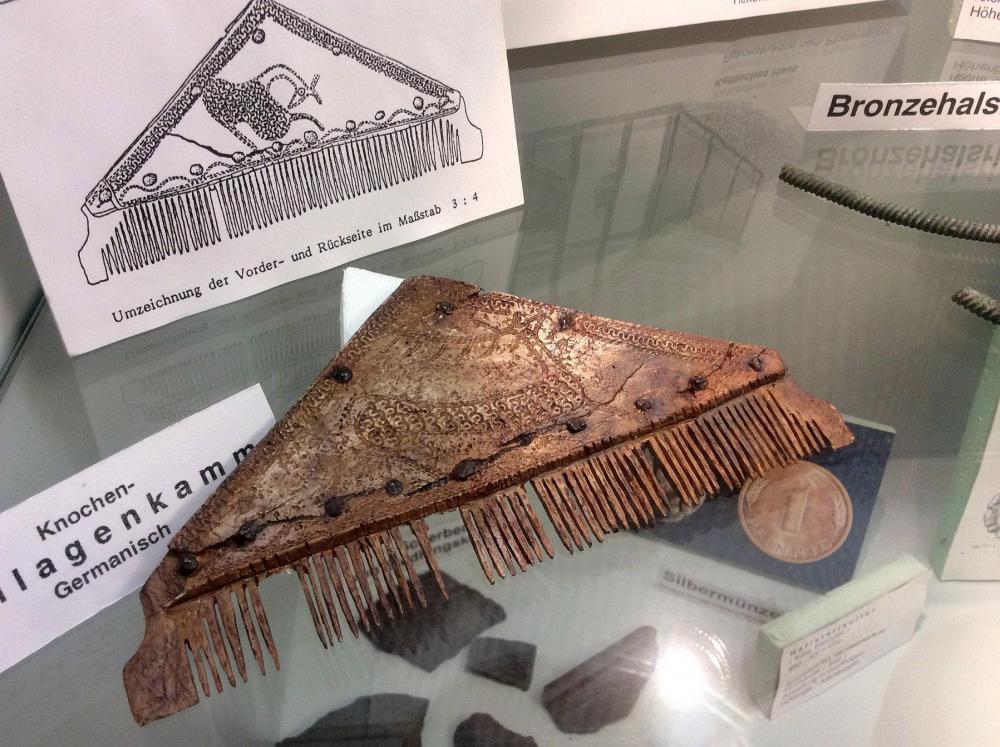-
Posts
2.359 -
Joined
-
Last visited
-
Days Won
80
Everything posted by Genava55
-
.thumb.jpg.b21ca1d0c15fb56b42c39b25a0a40815.jpg)
Civ: Germans (Cimbri, Suebians, Goths)
Genava55 replied to wowgetoffyourcellphone's topic in Delenda Est
Basically there is little evidence for native helmets and armor among the Germans. Only chainmail is known. But there are evidences for mercenaries and auxiliaries material. Imagine a noble Suebian, where could he get his helmet if he wants one? What are the relationship of the Suebians with Rome? Edit: for those interested From the Baltic to the Danube: Early Roman Iron Age Warriors from Hagenow, Mecklenburg, and Their Relations with Barbarian and Roman Worlds. http://briai.ku.lt/downloads/AB/08/08_058-068_Voss.pdf Relations between Rome and the German 'Kings' on the Middle Danube in the First to Fourth Centuries A.D http://www.kroraina.com/varia/pdfs/pitts_Relations between Rome and the German 'Kings' on the Middle Danube in the First to Fourth Centuries.pdf -
I open this thread to offer a starting point for those that want to deepen specific topics and to centralize the different useful sources found by the members of our community. Anybody can propose a reference to add to the list. I will update the list when I can. To ease the reading, I put the title first, then the author name and the year. The goal here is NOT to reference EVERYTHING. There are too many books on the same topics. The best option should be to propose some key readings on specific topics, the best references available. Some books in foreign languages are welcomed. We should avoid to post direct links to Library Genesis or Sci-Hub here, but checking if the book is available there will be an appreciated effort. Proposing very rare and overpriced books is not useful, except if it is still possible to find it in an electronic format. I start with Rome and I will continue later. Recommended Classical Literature Rome Celts Mauryas / Ancient India Hellenistic / Diadochi / Alexander and his successors Others will follow up...
-
.thumb.jpg.b21ca1d0c15fb56b42c39b25a0a40815.jpg)
I'm Planning to Get a New PC and I Need Advice
Genava55 replied to sphyrth's topic in Introductions & Off-Topic Discussion
https://www.newegg.com/global/hn-en/gigabyte-radeon-rx-570-gv-rx570gaming-4gd/p/N82E16814125966 From a quick search -
Some talk: https://forums.totalwar.org/vb/showthread.php/51155-EB-Imitation-Legions-Thuerophoroi http://www.twcenter.net/forums/showthread.php?628825-Hellenistic-romanized-sword-bearer
-
The City Besieged. Siege and Its Manifestations in the Ancient Near East. https://brill.com/view/title/16583 Available online
-
.thumb.jpg.b21ca1d0c15fb56b42c39b25a0a40815.jpg)
I'm Planning to Get a New PC and I Need Advice
Genava55 replied to sphyrth's topic in Introductions & Off-Topic Discussion
Now an Asus RX560 I got on a sale. Before it was a GTX 460 OC, again got on a sale 8 years ago. Both were able to run AC: Origins but clearly it was a bit difficult for the GTX. -
.thumb.jpg.b21ca1d0c15fb56b42c39b25a0a40815.jpg)
I'm Planning to Get a New PC and I Need Advice
Genava55 replied to sphyrth's topic in Introductions & Off-Topic Discussion
My strategy in building long lasting PCs is to bought a correct CPU and to upgrade the GPU after some months/years. 8 years ago, I put 220 CHF in a i5 2500k and recently I was able to play Assassin Creed Origins on decent settings. Simply by upgrading one time the GPU during these 8 years. -
The Romans army often carried out their small engines with them, like the scorpion. Edit: siege tower and battering ram were clearly built on site however.
-
.thumb.jpg.b21ca1d0c15fb56b42c39b25a0a40815.jpg)
Civ: Germans (Cimbri, Suebians, Goths)
Genava55 replied to wowgetoffyourcellphone's topic in Delenda Est
That face omg -
Polybius 30.25 : 1 This same king when he heard of the games celebrated in Macedonia by Aemilius Paullus the Roman general, ambitious of surpassing Paullus in magnificence sent out embassies and sacred missions to the towns to announce the games he was about to give at Daphne, so that people in Greece were very eager to visit Antioch then. 2 The festival opened with a procession composed as follows: 3 It was headed by five thousand men in the prime of life armed after the Roman fashion and wearing breastplates of chain-armour. Next came five thousand Mysians, 4 and immediately behind them three thousand Cilicians armed in the manner of light infantry, wearing gold crowns. 5 Next came three thousand Thracians and five thousand Gauls. They were followed by twenty thousand Macedonians of whom ten thousand bore golden shields, p145 five thousand brazen shields and the rest silver shields. 6 Next marched two hundred and fifty pairs of gladiators, and behind them a thousand horsemen from Nisa and three thousand from Antioch itself, most of whom had crowns and trappings of gold and the rest trappings of silver. Next to these came the so‑called "companion cavalry," numbering about a thousand, all with gold trappings, and next the regiment of "royal friends" of equal number and similarly accoutred; next a thousand picked horse followed by the so‑called "agema", supposed to be the crack cavalry corps, numbering about a thousand. Last of all marched the "cataphract" or mailed horse, the horses and men being armed in complete mail, as the name indicated. All the above wore purple surcoats in many cases embroidered with gold and heraldic designs. 11 Next came a hundred chariots drawn by six horses and forty drawn by four horses, and then a chariot drawn by four elephants and another drawn by a pair, and finally thirty-six elephants in single file with their housings. Book - THE SELEUCID ARMY Organization and Tactics in the Great Campaigns: "The Seleucid phalanx at Beith-Zacharia is indeed described by I Macc, as 'equipped with chain mail' , but the source, perhaps an eye witness, was evidently carried away by the sight of the one contingent armed in Roman style, which is recorded as being similarly equipped at Daphne (Polyb. 30.25.3). The generalization may also be attributable to the positioning of the 'Roman' infantry in the advance 'elephant divisions', which were first to enter the defile (see p.181 below)." Probably that the most "extraordinary" fashion for observers at that time is the chain mail, not usually adopted by the Hellenes. I cannot rule out the possibility that it is simply Thorakitai slightly inspired by the Romans.
-
.thumb.jpg.b21ca1d0c15fb56b42c39b25a0a40815.jpg)
Civ: Germans (Cimbri, Suebians, Goths)
Genava55 replied to wowgetoffyourcellphone's topic in Delenda Est
Imported egyptian blue is attested for high-ranking burial. -
Where is the limit? Should they have used pilum and montefortino helmets?
-
.thumb.jpg.b21ca1d0c15fb56b42c39b25a0a40815.jpg)
The Kingdom of Kush: A proper introduction [Illustrated]
Genava55 replied to Sundiata's topic in Official tasks
- 1.040 replies
-
- 3
-

-
- civ profile
- history
- (and 5 more)
-
.thumb.jpg.b21ca1d0c15fb56b42c39b25a0a40815.jpg)
Total War saga news & videos
Genava55 replied to Lion.Kanzen's topic in Introductions & Off-Topic Discussion
Oh it is worse than that, they seem to have skipped Diomedes. Hey! It was the first mod I tried! One of my favorite! I played months hardcorely as a teenager on it -
.thumb.jpg.b21ca1d0c15fb56b42c39b25a0a40815.jpg)
Total War saga news & videos
Genava55 replied to Lion.Kanzen's topic in Introductions & Off-Topic Discussion
At least Rome 1 was easily moddable... I prefer it than Rome 2 simply for this. I understand totally that a game could skip historical accuracy if they assume it and do not hide the inaccuracies. Amateurs are often better than the developers. Historical accuracy at the level of nitpickers is a small market. -
.thumb.jpg.b21ca1d0c15fb56b42c39b25a0a40815.jpg)
Total War saga news & videos
Genava55 replied to Lion.Kanzen's topic in Introductions & Off-Topic Discussion
I was sure they would do this since Three Kingdom is a romanced version... I was sure -
.thumb.jpg.b21ca1d0c15fb56b42c39b25a0a40815.jpg)
undefined discussion subject
Genava55 replied to Lion.Kanzen's topic in Introductions & Off-Topic Discussion
I post here since I do not know elsewhere to do it. Are you guys interested to open a thread with bibliography and references about ancient history? Like did EB in their forum. If you are interested in it, I can open a thread in the General Discussion section and keep it updated with the proposals of the other members. Trying to make it properly classified and readable. -
.thumb.jpg.b21ca1d0c15fb56b42c39b25a0a40815.jpg)
Fall of Civilizations Podcast - Roman Britain
Genava55 replied to coworotel's topic in General Discussion
There is the common cliché of seeing barbarians as dirty peoples with huge beards and giant moustaches. Actually the few iconographic details found by historians and archaeologists are suggesting a lot of shaved faces and some trimmed and contoured beard and mustache. Classical literature suggests Celtic warriors were kinda some fashionista with proper hygiene, which fits well in their logic of bravado and to show off to rise in the society. Even the early Germans that were far more materially poor than the Celts in the beginning of their iron age got different traditions related to their textiles, to their hair dress, to adornments. This is an issue stressed by archaeologists, probably that most of the traditions, of the cultural habits and of the esthetics among the "Barbarians" is definitively lost because it does not stand the effect of time in most conditions. In the case of the description from classical literature you are reacting about, indeed it stresses the idea that the mustache was the norm. It comes from Caesar: The most civilized of all these nations are they who inhabit Kent, which is entirely a maritime district, nor do they differ much from the Gallic customs. Most of the inland inhabitants do not sow corn, but live on milk and flesh, and are clad with skins. All the Britons, indeed, dye themselves with wood, which occasions a bluish color, and thereby have a more terrible appearance in fight. They wear their hair long, and have every part of their body shaved except their head and upper lip. Ten and even twelve have wives common to them, and particularly brothers among brothers, and parents among their children; but if there be any issue by these wives, they are reputed to be the children of those by whom respectively each was first espoused when a virgin. Although there is a huge issue with the description of Caesar since the Britons did sow corn (another British word for wheat). Archaeologically there is no doubt about it. It falls again in the Caesarian propaganda. He wanted to conquer the Gauls and to justify this, all his work is animalizing the other Barbarians at the frontiers to show than the Gauls are less barbaric and closer to the Romans now. Suffering of the same fear of barbarians invasions. The Gallic Wars books are one of the only time the Roman accounts started to be fair and genuinely interested to understand the Gallic society because of a motive behind. The discrepancy between the Gallic quite fair account from Caesar and the classical Roman xenophobia for the Germanic and British parts is just striking in his work. Diodorus Siculus will copy the description without precising his sources and the differences between the Celts (are they Gauls or Britons? are they all the same?) -
Just posting a to-do list for the future (not necessarily things urgent for the next release, could be postpone for the following one). Buildings: Updating the shields on the buildings: If you are looking for a circular thing as an asset, there is the wheel, a recurring symbol representing higher social status and mythological believes. Temples: Replacing the actual temple by more historically accurate buildings. The current temple can be slightly modified and transformed to a small feasting place if this kind of building is needed. For a new Gallic temple, @Sundiatastarted something interesting. For the Britons, maybe something inspired by Irish iron age sanctuaries (Dun Ailinne or Rathcroghan for example) or something purely British like the Heathrow, Hayling Island and Fison Way iron age sanctuaries. Taverna: Even if I like the building, I think the idea to make it an important structure of the Gauls falls in the cliché category. Feasting is an important part of the Celtic tradition, it is an institution that has huge impact on social and political processes in the society. Although it is not what everybody imagines with a small group of persons in an auberge/albergue like in the 1st movie of Lord of the Rings (The Prancing Pony). This kind of tavern could have existed but is related more to the merchants and artisans community and have little importance in the Celtic society. The game is skipping a lot of economical complexities so I do not know how this building could be include, although mods that are modifying the game to make it a city builder could use it. Monument: This is maybe the most pressing issue since it is the less accurate and the more cliché building of the Celtic factions (Stonehenge). @wowgetoffyourcellphone got an excellent idea with the Uffington White Horse for the Britons, although I am not sure if it fits well in the idea of monumentality (your opinion guys?) but clearly I think his idea should be include somehow. The other possibility for the Britons are among the sanctuaries proposed for the new temple (see above). Irish iron age buildings can be quite impressive. Bloodgate Hill Iron Age Fort can be used as an inspiration too. For the Gauls there is the Corent sanctuary made by @Stan`, maybe he wants to change to thatched roofs or wooden tiles like the fortress. No problem for me. The other possibility could be the huge sanctuary/assembly-place in Titelberg. The necropolis/death-related-votives-buildings of Acy-Romance could be an option if regrouped as successive buildings. Units: The name list of the units should be updated one day or another. The roster of the Britons and of the Gauls should be differentiated one day or another. I think we should wait what insight and design will emerge from @borg- modding and testing, with the feedback of other players. For the moment my proposals are waiting. Changing the roster is not something to do lightly. And the possible changes on the military design of the game can have huge effect in my proposals for the roster (notably about swords units). I do not know which conclusion the team reaches after the crazy flame-war discussion around Borg mod. The iron scabbard and the carnyx will probably be added soon according to @Alexandermb message. He already did a huge work on the shields, on the helmets and on the weapons. The heroes should be updated as well in the future. Currently they are some issues on the design of those.
-
.thumb.jpg.b21ca1d0c15fb56b42c39b25a0a40815.jpg)
Extra units references
Genava55 replied to Lion.Kanzen's topic in Tutorials, references and art help
Overrepresentation of the Corinthian helmets during the Peloponnesian war. An aquilifer with a masked helmet during the last Punic War. Vercingetorix wearing a scabbard and a helmet type from the 4th and 3rd centuries BC. The Britons nonexistent helmet on the right and a shield boss already outdated for the 1st century AD. Julius Caesar and Roman officers like Peplum movies clichés. -
.thumb.jpg.b21ca1d0c15fb56b42c39b25a0a40815.jpg)
Extra units references
Genava55 replied to Lion.Kanzen's topic in Tutorials, references and art help
And the work of Mariusz Kozik is not what we could call "accurate" (although it is beautiful) -
.thumb.jpg.b21ca1d0c15fb56b42c39b25a0a40815.jpg)
Civ: Germans (Cimbri, Suebians, Goths)
Genava55 replied to wowgetoffyourcellphone's topic in Delenda Est
Restorers discover shield fragment is 1,700 years old, making it the oldest German panel painting https://www.theartnewspaper.com/news/shield-fragment-from-ad300-is-the-oldest-german-panel-painting -
.thumb.jpg.b21ca1d0c15fb56b42c39b25a0a40815.jpg)
Civ: Germans (Cimbri, Suebians, Goths)
Genava55 replied to wowgetoffyourcellphone's topic in Delenda Est

